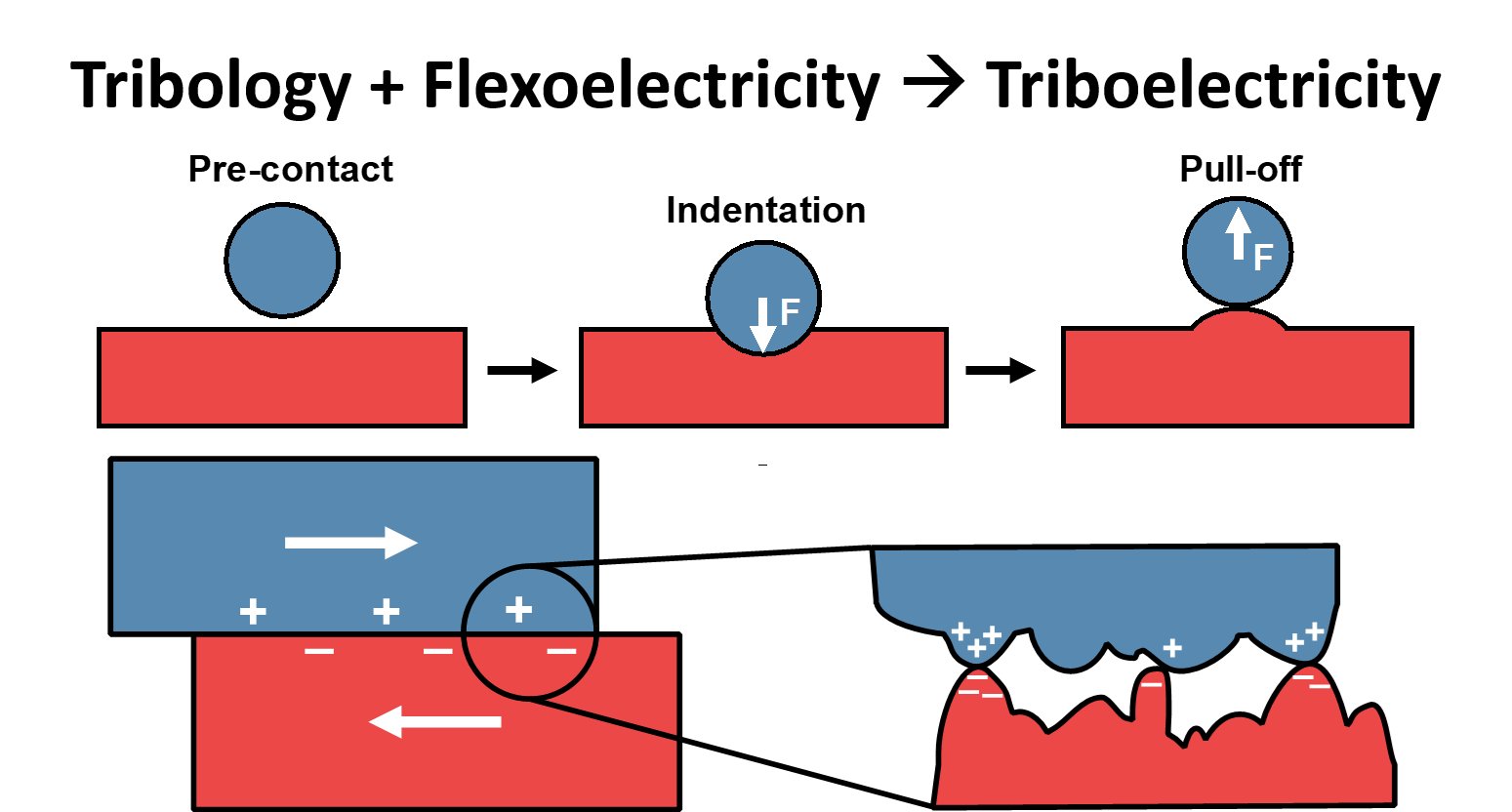Fred Hoyle
Triboelectricity

Most people have personal experience with hair standing on end after being rubbed with a balloon or a door handle giving a shock
after walking on carpet. Both of these are caused by the triboelectric effect, or the transfer of charge between two rubbing or contacting materials.
This effect has been known since fur was rubbed on amber by the Greek philosopher Thales at least 2500 years ago,
but the fundamental mechanism is still not well-understood in insulators. Scientists and engineers have learned to exploit the effect,
incorporating it into a number of applications, such as in laser printers and pollution control devices. However, it also can cause dangerous
events via electrostatic discharge. Of particular concern are explosions or fires that can happen in manufacturing environments that create or use dust or powders.
Triboelectricity is also important in a huge range of physical phenomena, from electrification of sand or dust storms to planetary formation.
 Tribology is the study of materials in contact. As materials slide against each other, nano-scale bumps and ridges contact.
These asperties push against each other and deform as the materials slide, causing friciton.
Because the asperities are small and can undergo large deformation, huge strain gradients are produced across the surface of the sliding materials.
The flexoelectric effect, which couples these strain gradients to polarization, causes a potential difference between the asperities that drives charge transfer.
This process is known as triboelectricity, as it combines tribology and flexoelectricity to explain how static electricity happens.
A schematic of this process is presented in the figure.
Tribology is the study of materials in contact. As materials slide against each other, nano-scale bumps and ridges contact.
These asperties push against each other and deform as the materials slide, causing friciton.
Because the asperities are small and can undergo large deformation, huge strain gradients are produced across the surface of the sliding materials.
The flexoelectric effect, which couples these strain gradients to polarization, causes a potential difference between the asperities that drives charge transfer.
This process is known as triboelectricity, as it combines tribology and flexoelectricity to explain how static electricity happens.
A schematic of this process is presented in the figure.
This triboelectricity mechanism also explains why charge transfers when two objects of different materials or different shapes come into simple contact without sliding.
The simple case of a sphere contacting a slab is shown in the figure. Like the sliding, strain gradients form near the contact and a potential difference develops, driving charge transfer.
Our triboelectric work aims to understand the driving forces underlying the triboelectric effect.
Recognition of the inseparable connection between triboelectricity, flexoelectricity, and tribology is new and affords
much experimental and theoretical progress in the future.
Recent Publications:
-
Band Bending and Ratcheting Explain Trioboelectricity in a Flexoelectric Contact Diode
K. P. Olson, C. A. Mizzi, and L. D. Marks
Nano Lett. 22 (2022) 3914-3921
-
When Flexoelectricity Drives Triboelectricity
C. A. Mizzi and L. D. Marks
Nano Lett. 22 (2022) 3939-3945
-
Does Flexoelectricity Drive Triboelectricity?
C. A. Mizzi*, A. Y. W. Lin*, and L. D. Marks (*equal contribution)
Phys. Rev. Lett. 123 (2019) 116103
